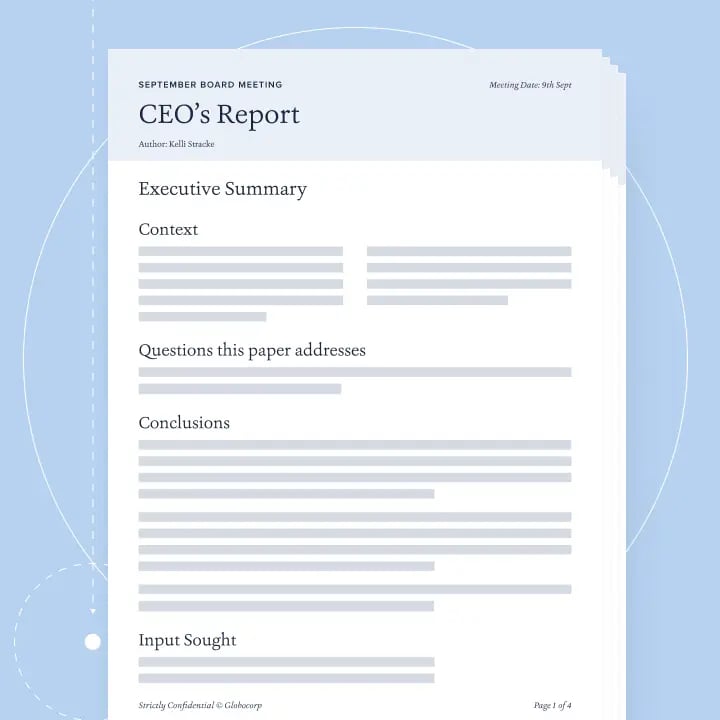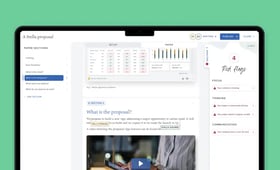What was the challenge?
Nearly 100 years ago, in 1928, the John Lewis Partnership created the first edition of their constitution: 294 pages that set an example for industrial democracy well ahead of its time. JLP was a forerunner; who understood that employee ownership had huge benefits for the employees themselves, the business, and wider economy.
This approach, Sarah told us, had worked well for a long time, and its impact had resonated widely within the retail sector — empowering people to build great relationships with customers all whilst using their own judgement. But when your company’s purpose is that long-running, it can be a huge challenge to prevent it from becoming diluted by change and disruption.
Inevitably, she described, hierarchy creeps in, governance and process take over, and teams get too focused on chasing financial KPIs — and after decades of this process, the company’s raison d’être was now in danger of slipping from their grasp. (This I not uncommon, either: Tata Group has refreshed its purpose three times since its founding in the 1860s; Danone also three times since the 1970s.)
For JLP it became business critical to work on re-igniting purpose so that it was fit and relevant for the world today.
What was the strategy for addressing this challenge?
Build a “Why?” that speaks to every part of the business
So where do you start? For Sarah, this had to begin with engagement across the business. Otherwise, if purpose was cooked up by the executive team in a closed room, it would never resonate in the layers below. This meant understanding how relevant the company’s purpose was to different functions, finding out why a change was imperative to them too, and coming up with arguments that would resonate with every part of the business. As Sarah summarised:
“Ultimately, different arguments appeal to different people – some people were won over from the angle of cultural heritage, and what would be lost if the founding principles became eroded and not updated for a modern world. Others were won over by the financial case for re-embedding purpose, or broader strategic reasons. In all cases, it was crucial to know what argument was most likely to win people round and address their concerns.”
Building a credible “why” also meant being across all the evidence, often using external sources, to paint a full picture and move from theoretical discussions about purpose to concrete examples: “What are competitors doing? Why is purpose important to us and what problems could it solve?”
Communicate and engage with stakeholders — board included
After employee engagement, the next step was talking to customers, suppliers, and partners to gather ideas and perspectives. This external input provided the executive team members with a more complete view of what the Partnership was “all about”, which in turn helped them arrive at a statement — in other words, “What are we trying to achieve?” — to feed into strategy.
Importantly, the board was not just kept up to date on the progress being made, but was also treated as an integral stakeholder. Part of the process included interviewing each board member at the beginning, middle, and end, helping to get their buy-in and offering them an opportunity to contribute as individuals with different expertise and skills. This also, Sarah reflected, meant the organisation could be bolder in its ambitions.
Turn it into more than writing on a wall
In a partnership with a formal constitution, purpose can’t just be writing on a wall. For JLP, changing the purpose meant working with the trustee to update — and simplify — their constitution. It is now based on three principles: happier people, happier business, and a happier world. As Sarah summarises, “these pillars act as our guiding light as a business, and form the foundations of everything we do.”
Armed with an updated constitution and a strategy, the next step was putting it all into practice.
“We now needed to collectively think through what it means and what’s going to change as a result: How are we going to measure success? What does it mean for governance, for example? Or for R&D investment?”
The key to success was collaboration. First, Sarah collaborated with two other leaders in the business, the head of strategy and head of finance, to collectively make a “three-legged stool” and go into as many meetings together. Sarah told us that “in all our meetings we worked together to demonstrate that our financial and commercial strategies were aligned with the purpose — they were one and the same.” This helped to prevent purpose from becoming siloed or seen as a fringe activity not connected to parts of the business.
Next came the process of “rewiring the organisation’s DNA”. To do this, they pulled together a broad group of people from across functions — including legal, governance, and human resources — to look at every point of the organisation where purpose was being embedded. This meant re-looking at inductions; rethinking how leaders are assessed and promoted; and so on.
Set metrics to drive behaviours and buy-in
Although every business uses metrics as performance indicators, not all metrics drive the right behaviours. For example, having everyone trying to hit financial targets to ensure a bonus return for staff, can, paradoxically, lead to an erosion of all the things besides that bonus return that make the organisation a great place for people to work. You end up reducing overall satisfaction — all because you’re chasing the wrong metric.
JLP was therefore keen to employ metrics that would take into full account the wider impact on employees, suppliers, and the communities in which the Partnership operates. This didn’t mean abandoning financial metrics, but broadening how success was defined and rewarded, to drive the right culture and actions.
Choosing metrics is also an opportunity to get engagement and buy-in across the business, as long as the process is transparent and allows each department to set their own. Sarah described how:
“We began the conversation by asking people to rethink what success looked like — both for them and their team — and to get them to think about the impact on the environment, our suppliers, our employees, and the communities in which we operate. Allowing them to set their own metric helped to embed that vision, whilst also making sure that it is relevant for each department and that they see clearly where they slot into the wider picture. It helped to make the wider strategy and purpose meaningful for them.”
Another challenge with metrics is what you do with them. As Sarah summarised: “What’s the point of having a bunch of metrics if you’re just going to interpret them away so they lose their meaning and utility?” One way to avoid the temptation of explaining away unfavourable metrics — for example attributing decreasing employee satisfaction to external factors like the pandemic or Brexit — is to use external benchmarking. This worked to an extent for JLP, although as Sarah notes, the key thing is leaders’ interpretation of the scores and how they act accordingly. This above else means leaders and boards learning to be comfortable with a metric that is good but isn’t necessarily everything you had hoped for. The important thing is that you are heading in the right direction, not that you’re blindly chasing KPIs.
What lessons can we learn?
Although the challenges inherent to embedding purpose in large organisations — especially older ones — can be daunting, they are far from insurmountable.
From Sarah’s experience doing precisely this, the right evidence and arguments coupled with a clear vision of what success actually looks like can ensure that your organisation not only has purpose but that it also reverberates throughout, from the C-suite to those on the ground.
“Our approach here was to be mindful of our partners, customers, community, and our obligation to future generations in order to produce our vision of the 21st-century partnership.”
Sarah Gillard is an advocate for making businesses “more human”. She has 25 years of experience leading in fast-paced commercial environments, most recently as director of purpose and special projects at the John Lewis Partnership, and is now both CEO of A Blueprint for Better Business — an independent charity whose purpose is to create a better society through better business — and a trustee of the John Lewis Foundation.

A thinking and writing platform that helps you to write brilliantly clever and beautiful reports that surface breakthrough insights and spur your business to action.
Find out more


